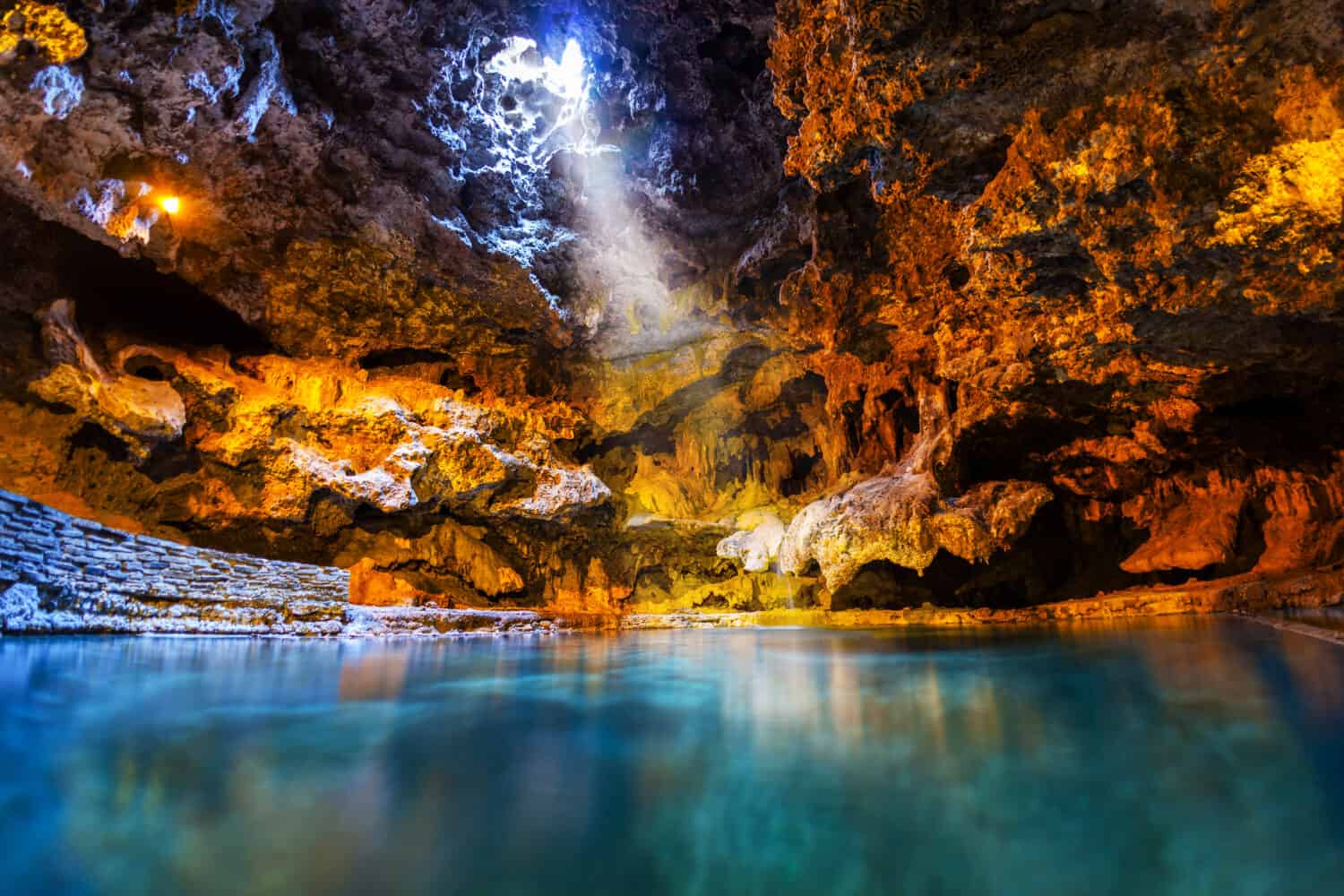Of all the wonders of the world, caves remain one of the most mysterious and elusive natural phenomena. Since the dawn of civilization, caves have provided humans with shelter, resources, and a subterranean world to explore. Even in the Greek and Roman myths, caves played a crucial role in explaining death and providing a home to certain deities.
In Canada, hundreds of caves lurk below the ground begging to be explored. While many set records for length, few have the illustrious title of the deepest caves in Canada. Experts and hobby spelunkers have explored the Great White North at length, constantly discovering new depths.
Discover the top seven deepest caves in Canada, the dangers associated with delving into these caves, and how scientists measure cave depth.
Deep Caves in Canada: Defining Depth

In deep tunnels, spelunkers often need to know how to repel.
©DCrane08/iStock via Getty Images
Cave depth differs from length — a cave’s length simply describes how long it is on a two-dimensional plane. You’d use a tape measure to determine how long across the cave is from the opening of its mouth to the very back or end of the cave.
Conversely, depth refers to the distance between the absolute highest point and the absolute lowest point of the cave. Special equipment dives into the caverns, using sonar and other special measurements to safely and accurately determine just how far down a cave goes.
The 7 Deepest Caves in Canada
According to CavingCanada.com, all seven of the deepest caves in Canada are in British Columbia’s Rockies, Vancouver Island, and Monashee Mountains regions.
Bisaro Anima, 683 m
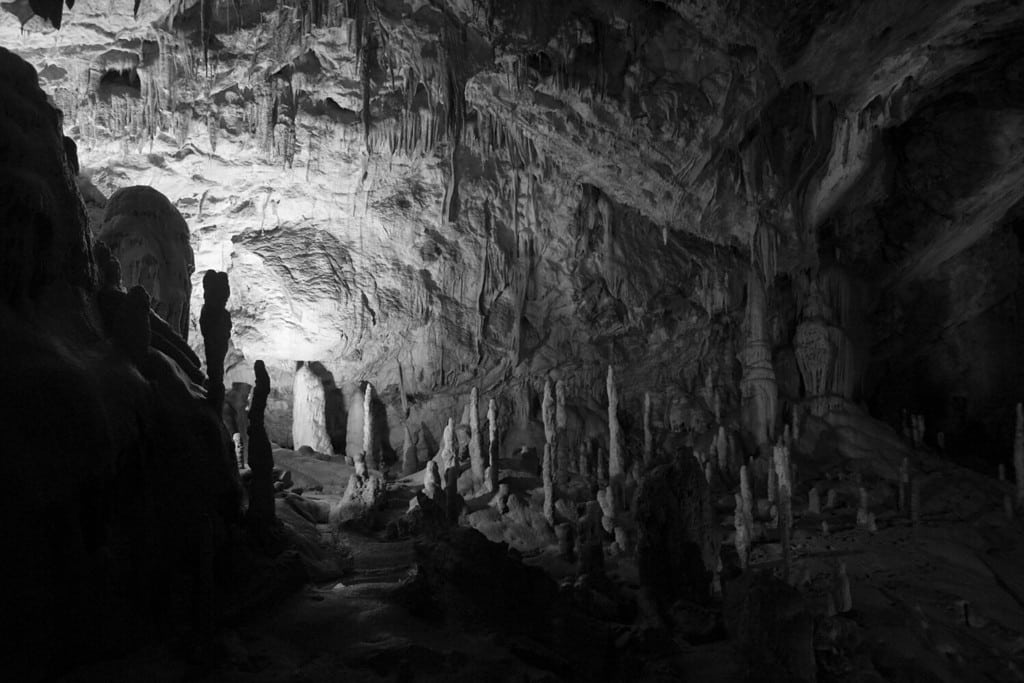
Bisaro Anima has held the title of the largest cave in Canada since 2012.
©Nicola Borrani/Shutterstock.com
As of 2023, Bisaro Anima remains the deepest cave in Canada at more than 680 meters deep. Located on the Bisaro Plateau in British Columbia, the cave ranks as both the deepest in the country — and one of the longest. It was discovered in 2012 when the discovery of a small crack led to the exploration of a huge cave system.
Robbie Benardout, the founder of NatureRoamer.com, leverages his decades of experience in off-the-beaten-path travel to provide other travelers with unique outdoor adventures. In conversation with A-Z Animals, he shared his experience in Bisaro Anima.
“In late 2019, I was part of an expedition group of fellow cavers who sought to uncover its secrets. With a team of 13, armed with state-of-the-art equipment, including diving gear, we ventured into the cave’s depths. The weight of the gear, coupled with the buzzing excitement among us, is something I’ll never forget.”
The climb and dive, however, were not without issue.
“Diving into such a cave is a venture filled with both exhilaration and palpable risks,” Bernadout continued. “One faces potential vertical drops, shifting water levels, and the ever-present danger of rockfalls. Tight spaces and fluctuating oxygen levels further up the ante. During our exploration, Kathleen, our lead diver, suffered a significant ankle injury. While the incident was a sobering reminder of the unpredictability of nature, it didn’t deter us. Adam, another team member, stepped up and guided us [to see] even more of the cave’s beauty.”
Heavy Breather System, 655 m
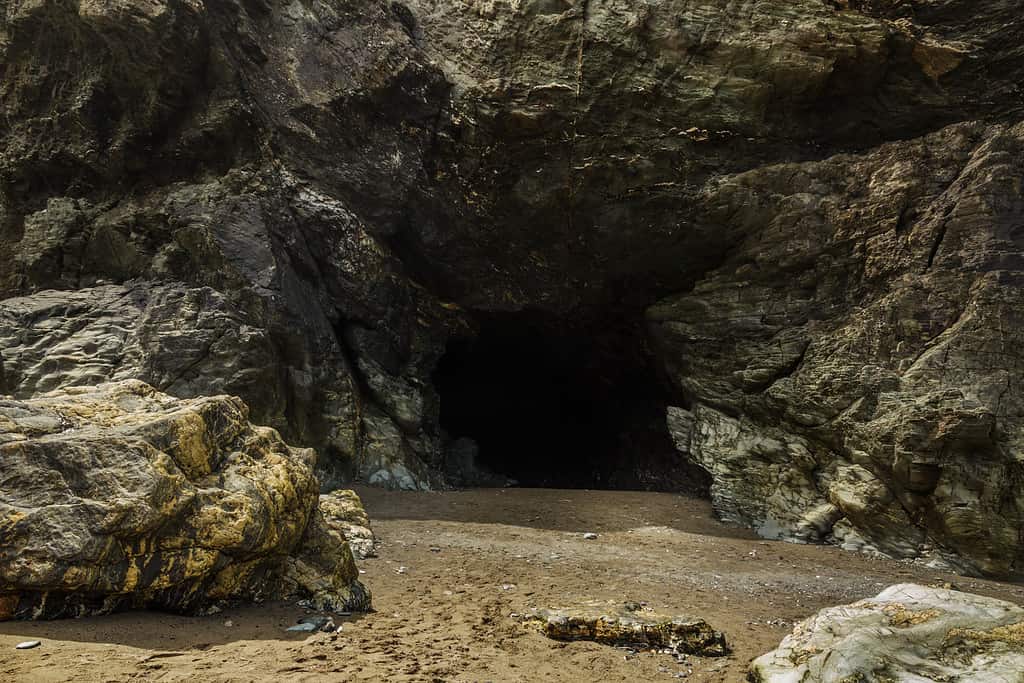
The Heavy Breather System of caves expels frigid air in the summertime.
©Manifestive_Media/iStock / Getty Images Plus via Getty Images
Also near Fernie, British Columbia — a similar location to Bisaro Anima — the Heavy Breather System held the title of Canada’s deepest cave for years. With a depth of 655 meters, the cave system’s winding tunnels and complex wells make Heavy Breather not only one of the deepest but one of the most challenging cave systems to survey as well.
A unique feature of the Heavy Breather System is the tunnel’s ability to “huff and puff,” as surveyors described. During an exploration in the fall of 2003, one climber remarked, “The cave just kept huffing and puffing; blowing out air in the morning, then sucking it back in each evening.” The system blasted out so much cold air in the summer that a climber standing even 20 meters away from the entrance could feel a palpable chill in the air.
Arctomys Cave, 536 m
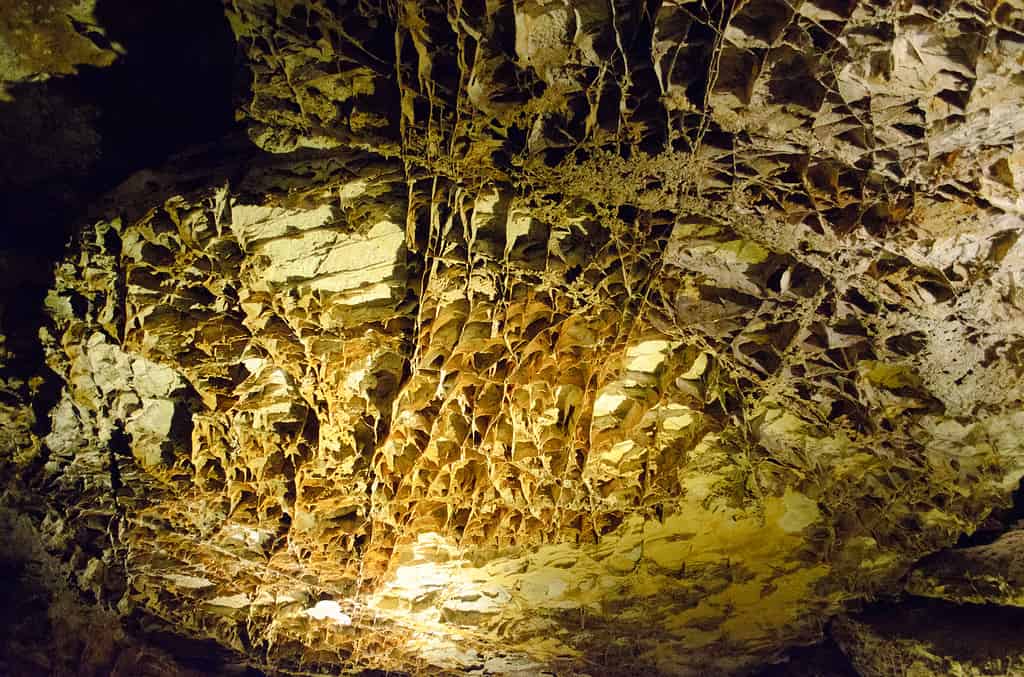
A tragic accident at Arctomys Cave in 1991 was a sobering reminder of the dangers lurking in Canada’s deepest caves.
©Zack Frank/Shutterstock.com
Climbers first discovered Canada’s third-deepest cave in 1911. Five mountaineers descended 80 meters down a waterfall but stopped when they assumed the shaft wouldn’t change, widen, or deepen.
For over 50 years, the cave lay in wait for another mountaineer to explore. In the years 1971 to 1973, surveyors explored the cave to its current-known depth of 536 meters. The McMaster University Climbing and Caving Club, the Guelph University Caving Club, and the Alberta Speleological Society were some of the groups involved in the survey.
Tragically, in 1991 a professional spelunker and park ranger lost his life while climbing. While deep in the cave, a boulder fell and struck him. Over 100 people were involved in the rescue efforts to recover his body.
Thanksgiving Cave, 479 m

Vancouver Island in British Columbia has some of Canada’s longest and deepest caves.
©EB Adventure Photography/Shutterstock.com
Tahsis Village in British Columbia is sometimes referred to as the “caving capital of Canada.” The small region offers a deep cave for spelunkers to challenge themselves with — even the village website recommends a guide for the “most hazardous” cave in the area.
Thanksgiving Cave is both the longest and the deepest cave on Vancouver Island. Located above Head Bay, visitors may have trouble pinpointing the opening of the cave. Both the roads leading to the cave and the cave entrance itself remain unmarked.
Perhaps the most dangerous cave on the list of Canada’s deepest caves, Thanksgiving Cave has treacherous paths. Claustrophobic adventurers may squirm at the tiny openings to crawl through. Climbers are also required to have repelling experience for a safe exploration.
Close-To-The-Edge Cave, 472 m
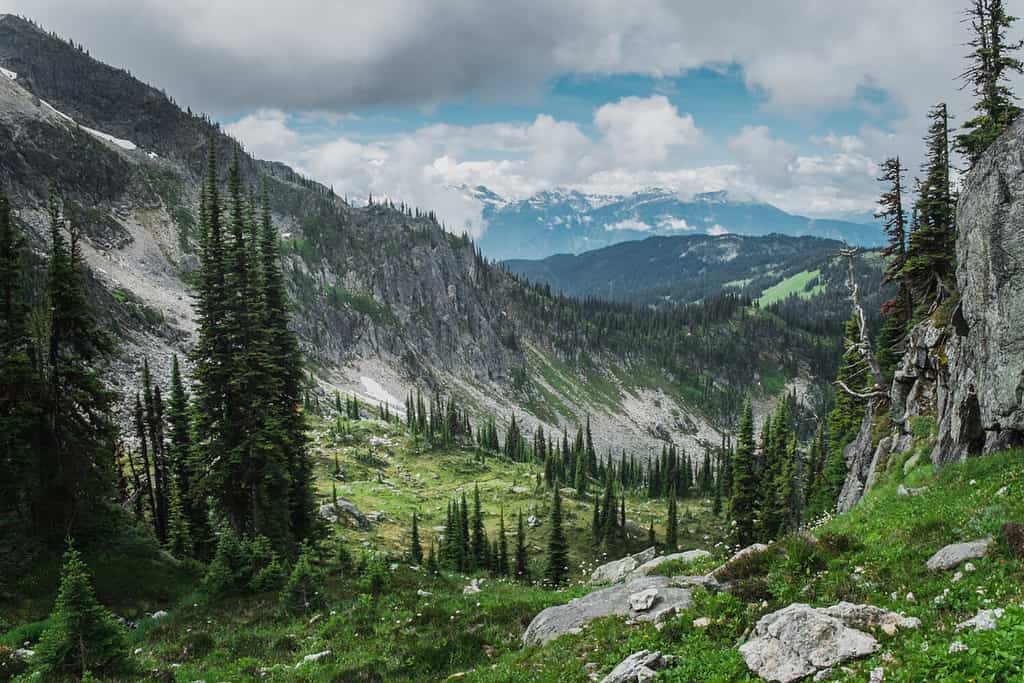
Close-To-The-Edge Cave has the deepest shaft in Canada at 255 meters.
©Jiri Kulisek/Shutterstock.com
Located in the Dezaiko Range of the Rocky Mountains, Close-To-The-Edge Cave has one of the deepest shafts in all of Canada. Cave shafts, or vertical openings that require explorers to use ladders or ropes to traverse, can span for thousands of feet or hundreds of meters in height. Close-To-The-Edge Cave’s shaft measures an impressive 255 meters. The shaft’s diameter varies on vertical location, reaching as wide as 30 meters in some parts.
Spelunkers first discovered Close-To-The-Edge Cave in 1983. However, its final depth wasn’t discovered until 2001 explorations. It resides in the larger Close-To-The-Edge Park, which protects the internationally significant cave.
White Rabbit Cave and Sarlacc’s Pit, 459 m
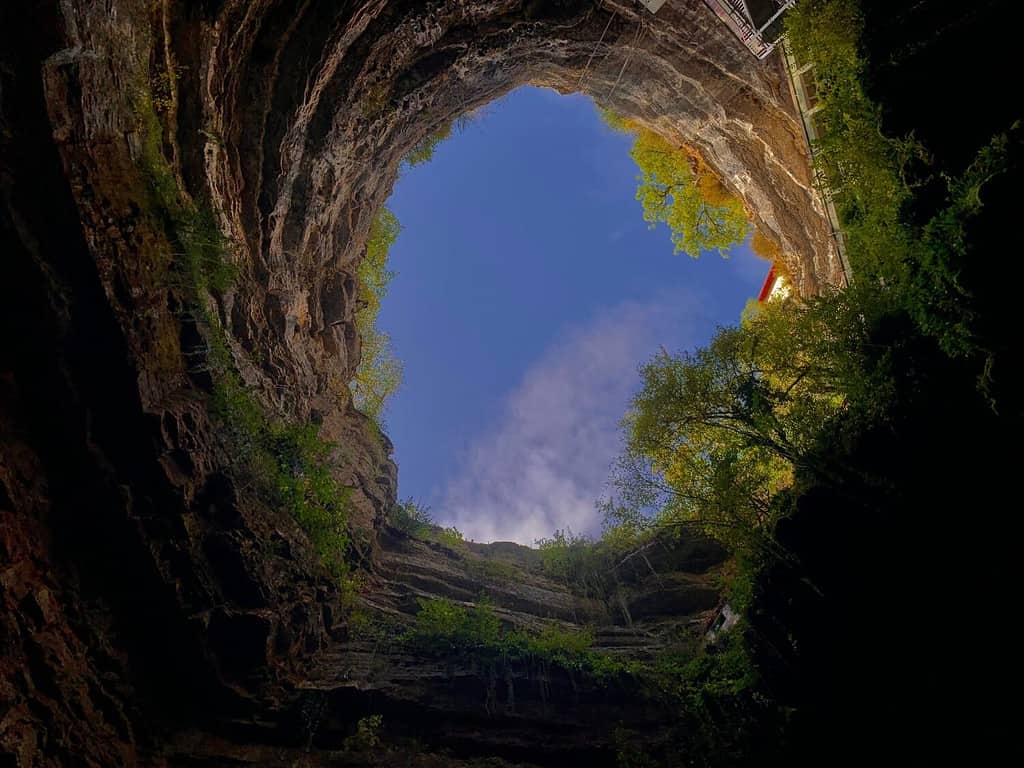
The gaping opening of White Rabbit cave wasn’t found until 2018, though the cave was discovered decades before in other surveys.
©krissssssk/Shutterstock.com
As the only cave in the Monashee Mountain Range on this top seven list of deepest caves in Canada, White Rabbit Cave remains a special geological wonder in southern British Columbia.
First discovered in 2018 in Wells Gray Provincial Park, explorers and media reports regard both White Rabbit Cave and Sarlacc’s Pit as some of the largest known stripe karst caves. Karst is a type of typography formed by carbonate rocks’ dissolutions, creating sinkholes and caves underground. Above ground, explorers may see poljes.
The discovery of the caves’ openings was surprising in 2018 — as the original surveying in 1984 made no mention of the massive river sink cave opening.
ARGO Cave System, 406 m
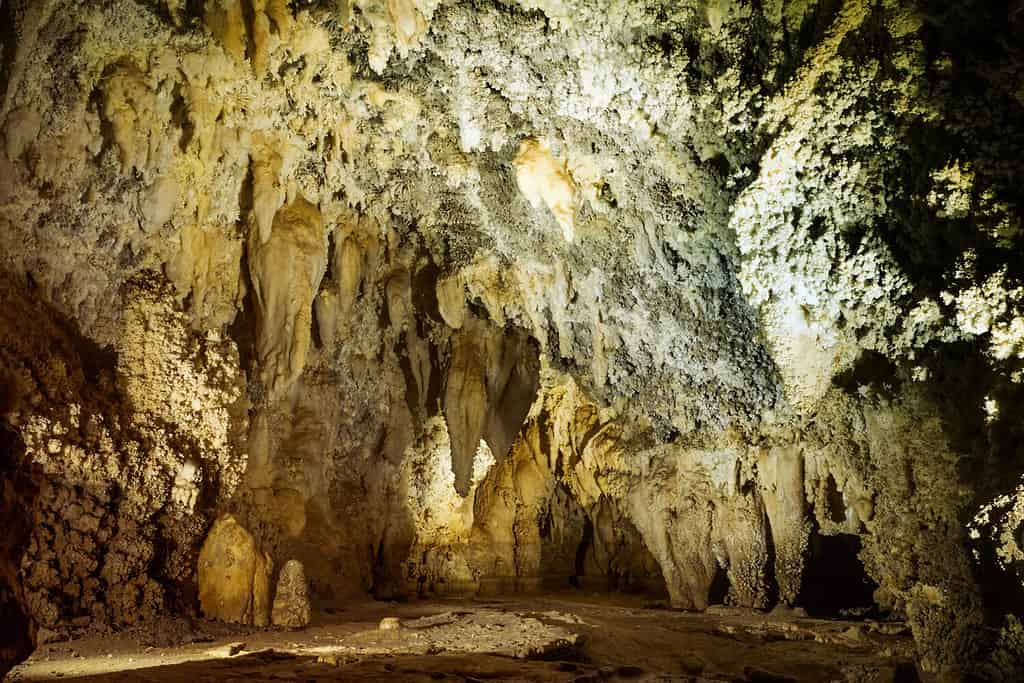
Cave systems exist when surveyors find connections between different, singular caves.
©IrinaK/Shutterstock.com
Traveling back to Vancouver Island, the list of the seven deepest caves in Canada ends with the ARGO cave system — Canada’s seventh-deepest and second-longest system.
ARGO’s discovery became monumental for the continued community support and funding of cave diving in the 2000s and 2010s. Cave divers found Hole in the Wall cave during a 94-meter cave dive in 2017. In 2019, divers continued to explore the area, seeking to connect Hole in the Wall with the neighboring Castleguard cave. When they finally found the connection, it created the ARGO Cave System. Of course, ARGO has more than just two caves within its system. Other major caves include Glory ‘Ole, Resonance, and Arch.
Dangers Associated with Deep Caves
While cave diving elicits excitement from spelunkers and other outdoor adventure enthusiasts, the depths to which these caves descend are not for the faint of heart. They require respect of the natural world and significant preparation — as well as years of climbing experience and a think-on-your-feet attitude.
“The thrill of exploring such depths is undeniable, but it isn’t without its fair share of risks,” said Jackson Groves, a professional adventure photographer, drone pilot, and travel expert — and the founder and owner of Journey Era, a top adventure travel resource.
Groves has climbed and photographed many caves, resulting in both unforgettably beautiful moments and heart-pounding near-death stories.
“I remember this one time when I was photographing a cave entrance and heard a fellow explorer recount his narrow escape from a rock fall. Caves, especially deep ones, are unpredictable. There’s the risk of rockfalls, hypothermia (it gets pretty cold down there!), not to mention the challenge of navigating through pitch-dark passages with potential drops or underwater sections.”
When diving in deep caves, explorers need to prepare supplies including guide lines, dive lights, oxygen, liquids and food, reliable boots, gloves, face masks, and more.
How to Measure Cave Depths
With the dangers these deep caves pose, it’s up to technology to accurately measure how deep a cave really is.
“Measuring the depth of a cave is its own brand of adventure,” shared Groves. “Even if you can’t physically descend into its belly, experts have their ways. They typically employ techniques like laser distance meters, elevation data from GPS, or even drone footage. Speaking of drones, during one of my drone piloting gigs, I was tasked with mapping out a cave system. It was a mind-boggling experience to watch the footage later and see the depth and intricacies of the cave from a bird’s eye view.”
Professional speleologists rely on software designed to map complex caves. One such software is electrical resistivity tomography, or ERT, which sends electrical currents through surfaces to provide high-contrast maps of walls and voids. Speleologists also use airborne electromagnetic mapping (AEM) which comes in particularly handy when mapping submerged caves.
Carlos Eduardo, the founder of ScoreBeyond, also shared several ways that professional cave explorers measure depth based on his travels and hobby climbing. “Experts measure the depth of a cave using various methods, especially when they cannot climb down. One common technique is laser rangefinding, where a laser beam is directed into the cave. Scientists use the time it takes for the beam to bounce back to calculate the distance. Another method involves the use of depth-finding equipment, such as sonar, to map the cave’s interior.“
Canada’s Cavernous Wonders Await
British Columbia is a hotbed of caves, holding the top seven deepest caves in Canada within its limits. Vancouver Island, one of Canada’s most cave-dotted locales, holds two of the seven. These deep caves pose inherent risks to explore — for which spelunkers need to prepare — but also offer unparalleled beauty and understanding of the subterranean world.
Thank you for reading! Have some feedback for us? Contact the AZ Animals editorial team.

